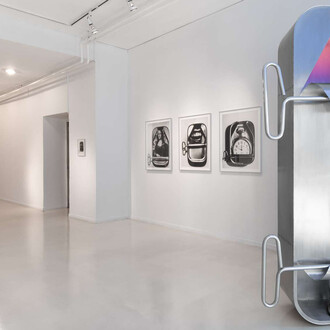The beginnings of the National Gallery of Slovenia reach back to September 1918 and were very modest in terms of the material situation. The founders, full of enthusiasm, started the venture without any premises for gallery activities and without a single work of art.
The National Gallery opened its first permanent exhibition to the public in five rooms of the Kresija palace (German Kreisamt) in Ljubljana on the 7 March 1920. In September 1922, within the context of the Ljubljana Velesejem (Grand Fair), the Gallery organized a Historical Exhibition of Slovenian Painting – its first temporary exhibition that resulted from the expertise of its own scholars.
Already in the first decade of its existence the Gallery established international contacts: it hosted the first exhibition from abroad – Exhibition of Czech Modern Art of the Manes Association of Fine Artists of Prague – in August and September 1924; and in September and October 1927, the Exhibition of Slovenian Modern Painting was its first one in a foreign country, namely in Prague's Obecni dům (Municipal House).
The varied exhibition policy of its early years has been the National Gallery’s established practice until today. Its constant care is focused on the updating of the permanent exhibition which is dedicated to art production on the Slovenian territory from the High Middle Ages to the mid-20th century. In the hundred years of its existence the Gallery prepared, on its own or in collaboration with other institutions and experts, a number of temporary monograph, group and thematic exhibitions. Adapted to the circumstances of each venue, some of these exhibitions toured numerous places throughout Slovenia and often also cultural centres of the former Yugoslav republics; they were also held among the Slovenians beyond the state borders and in major European cities. The Gallery has hosted, and continues to host ever more frequently, fine arts exhibitions from abroad that are significant to the Slovenian public and wider.
Most of the exhibitions of the National Gallery are, as a rule, accompanied by an exhibition catalogue, the more important ones also by a poster. The Gallery holds a collection of posters which numbers over 3,600 items, 161 of which were designed for the promotion of the Gallery's permanent collection, its own temporary and visiting exhibitions in the Gallery’s rooms and its exhibitions that toured Slovenia and abroad.
In the early decades of the functioning of the National Gallery, the poster as a visual message was, apart from periodical press, the only medium that directly addressed the audiences inviting them to see the exhibitions. Being a powerful means of communication with fine arts aficionados, it continues to be helpful even today, both in Slovenia and abroad, in spite of the progress and domination of new media.
The exhibition posters of the National Gallery generally followed the evolutional trends of poster design in Slovenia, although they were, and still are, intended not only for the general public but also for visually and aesthetically more receptive audiences. The message of an exhibition poster, as a rule, is composed of visual and textual elements. The balance between the two is greatly in favour of the former, particularly because the earlier exhibition posters were intended for pedestrians and slow traffic. Communication was effective since passers-by were just a few steps away; such distance allows readability of the visually subordinated textual component of the poster’s message.
Exhibition posters belong to event posters, more precisely to a subgroup of cultural event posters. Organizers of cultural events were aware from the very beginning that promotion of their activities requires posters of high-quality design. So it is not surprising that the earliest Slovenian graphic designing was performed by painters, and somewhat later architects also joined them. They created designs for posters in which the image was an ever more important element.
Also the first visually designed posters for the National Gallery were produced by painters: Matej Sternen (1870‒1949) made one for the exhibition of Slovenian portrait painting in 1925, Veno Pilon (1896‒1970) for the National Gallery's visiting exhibition in Prague in 1927, and Gojmir Anton Kos (1896‒1970) for the Kos–Dolinar–Pavlovec group exhibition two years later.
The majority of other posters from the time between the two wars were more modest, they were merely textual and their image was in the hands of printing masters. The same practice was partly followed also after the year 1945. In the following fifteen years a reproduction of a work of art was sometimes included in a poster, as a result of fruitful collaboration between the curator and the printer.
The year 1961 was crucial for exhibition posters of the National Gallery. In that year the Gallery ordered the poster design for its successful Baroque in Slovenia exhibition from two architects, Vlasto Kopač (1913‒2006) and Janez Valentinčič (1904‒1994). During the following thirty years architects, painters and illustrators, but also other non-professional designers ever more frequently signed the National Gallery's posters. Since Slovenia gained independence, the Gallery has been ordering the designing of its posters exclusively from professionals – mainly Miljenko Licul (1946‒2009) and Ranko Novak (1948) and their students and close associates – because it is aware of its essential societal role in fostering the nation's visual culture.
















